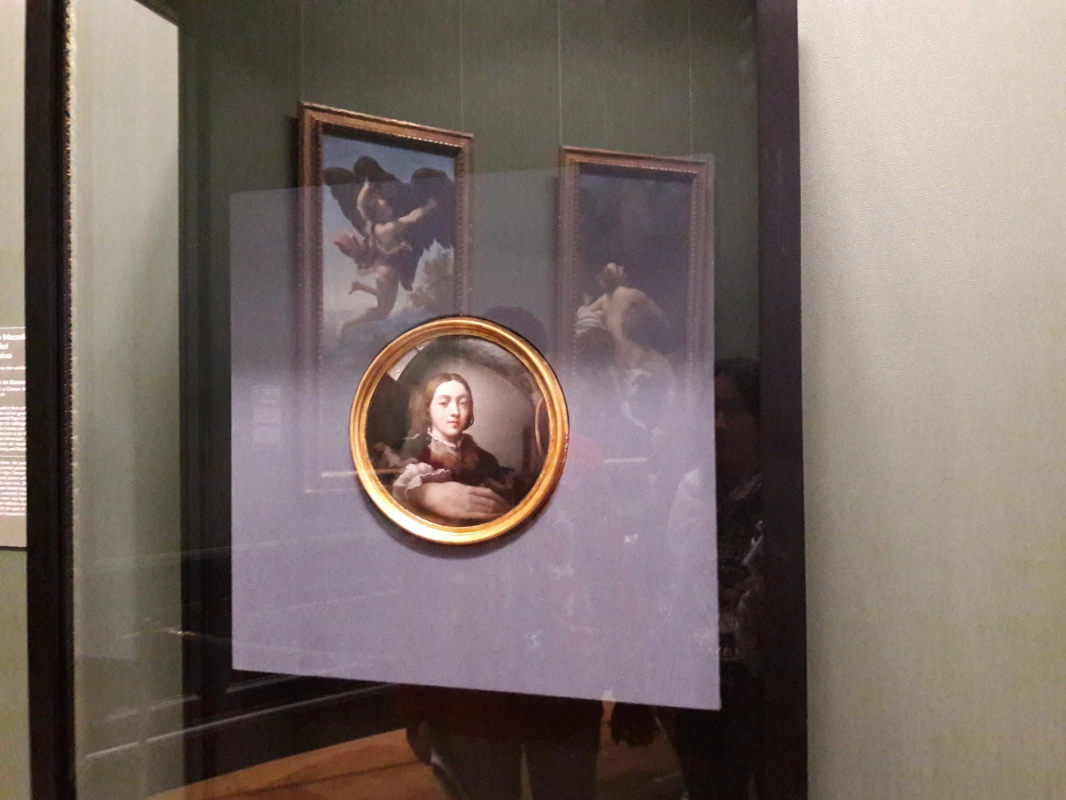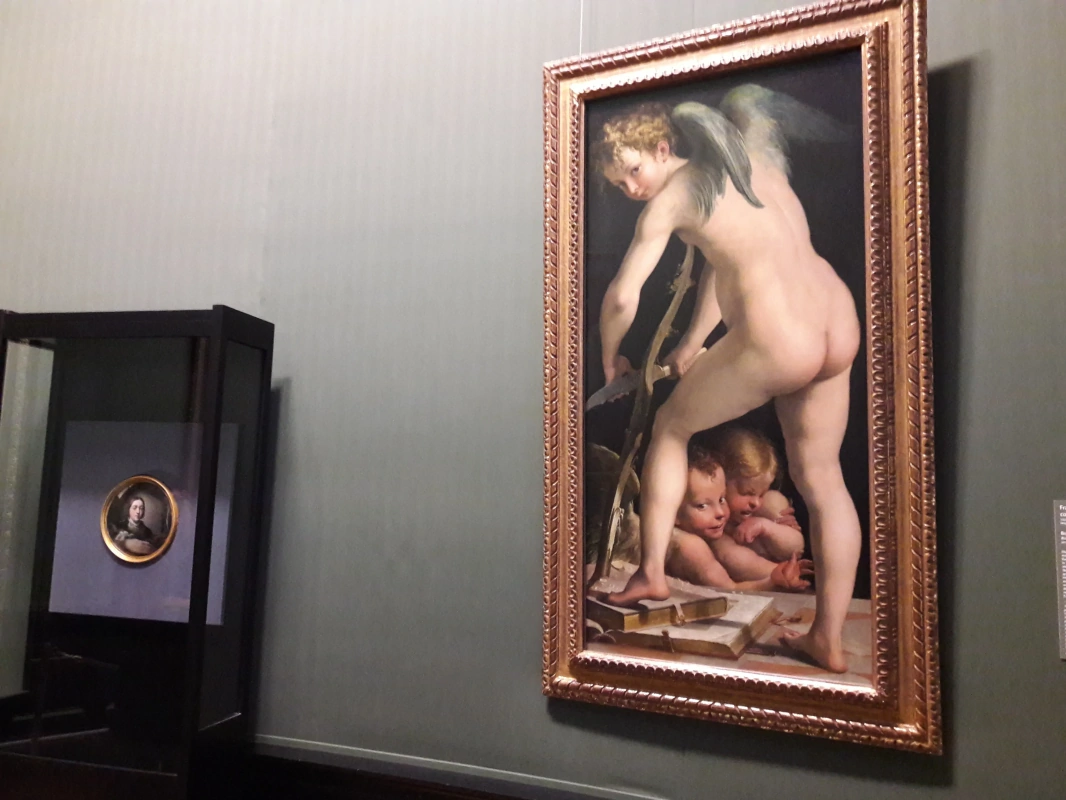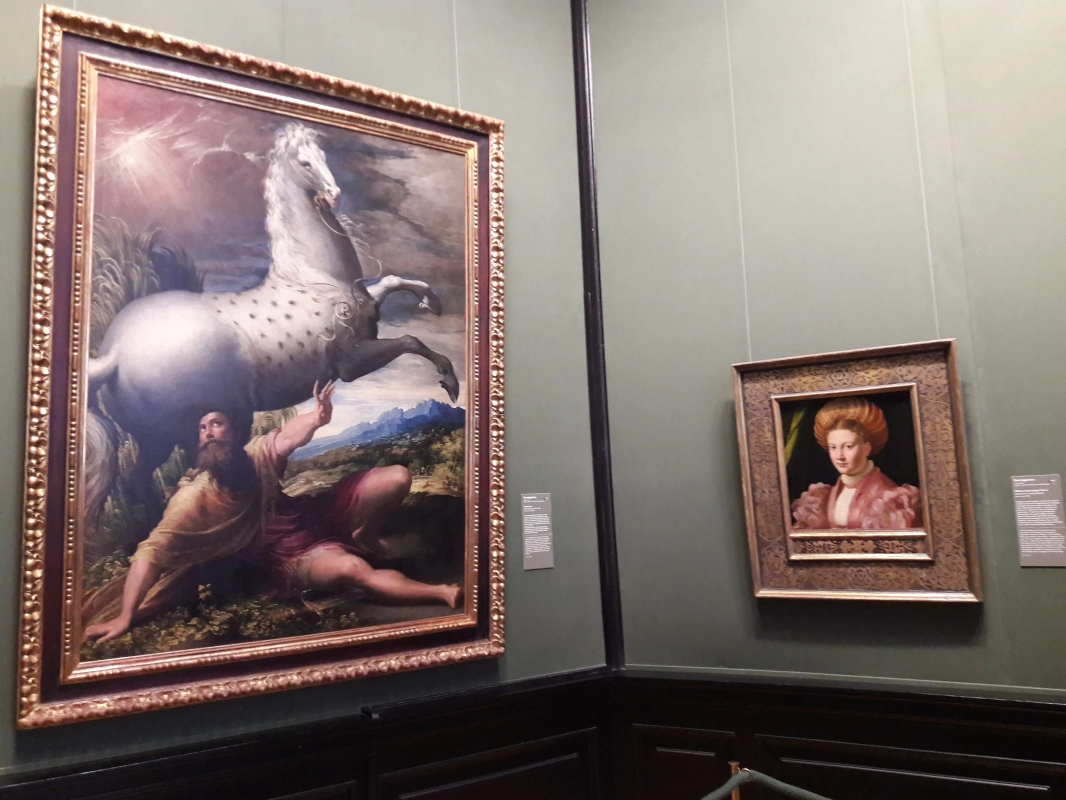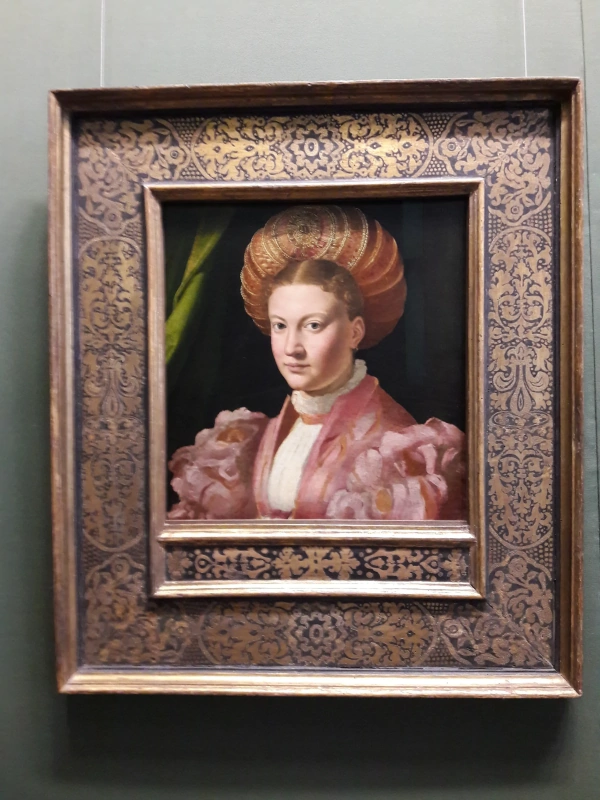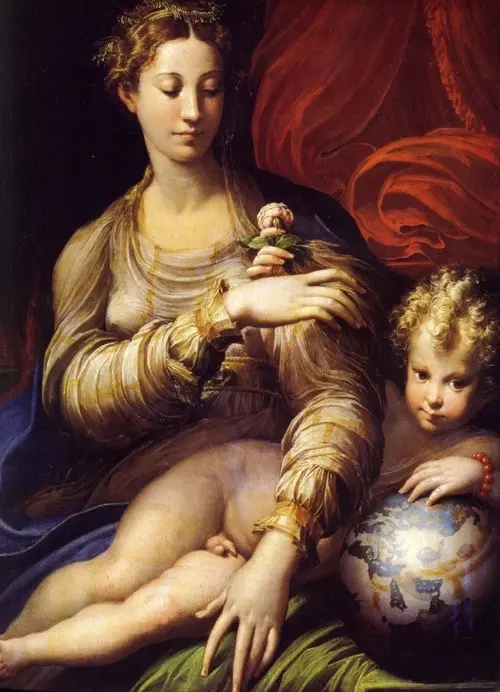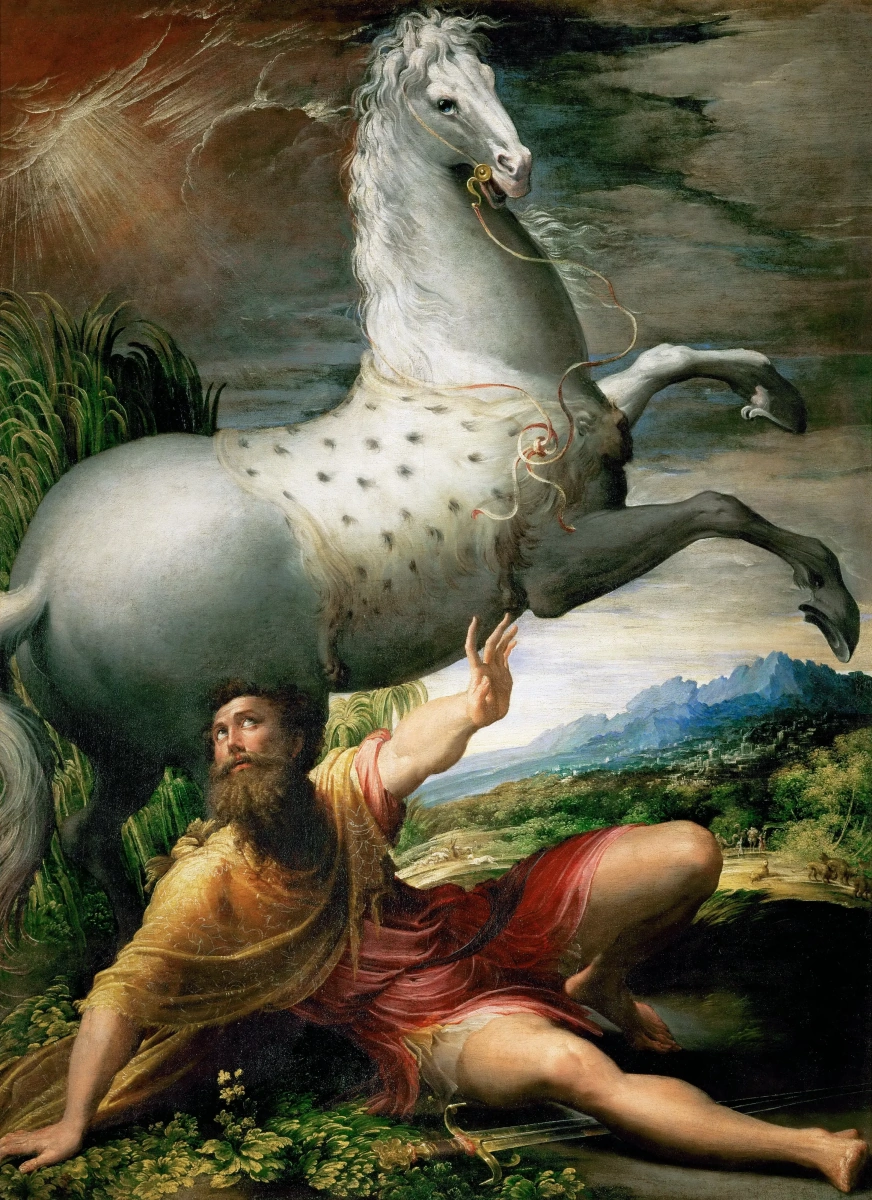Little Parma Dweller is the translation of the painter’s nickname from the Italian. His original name was Girolamo Francesco Maria Mazzola. For 37 years of his short but extremely fruitful and eventful life, Parmigianino managed to create a self-portrait, unique for his era, become one of the founders of Mannerism and quit painting for the study
of the volatile secrets of alchemy. The last decision became fatal for him.
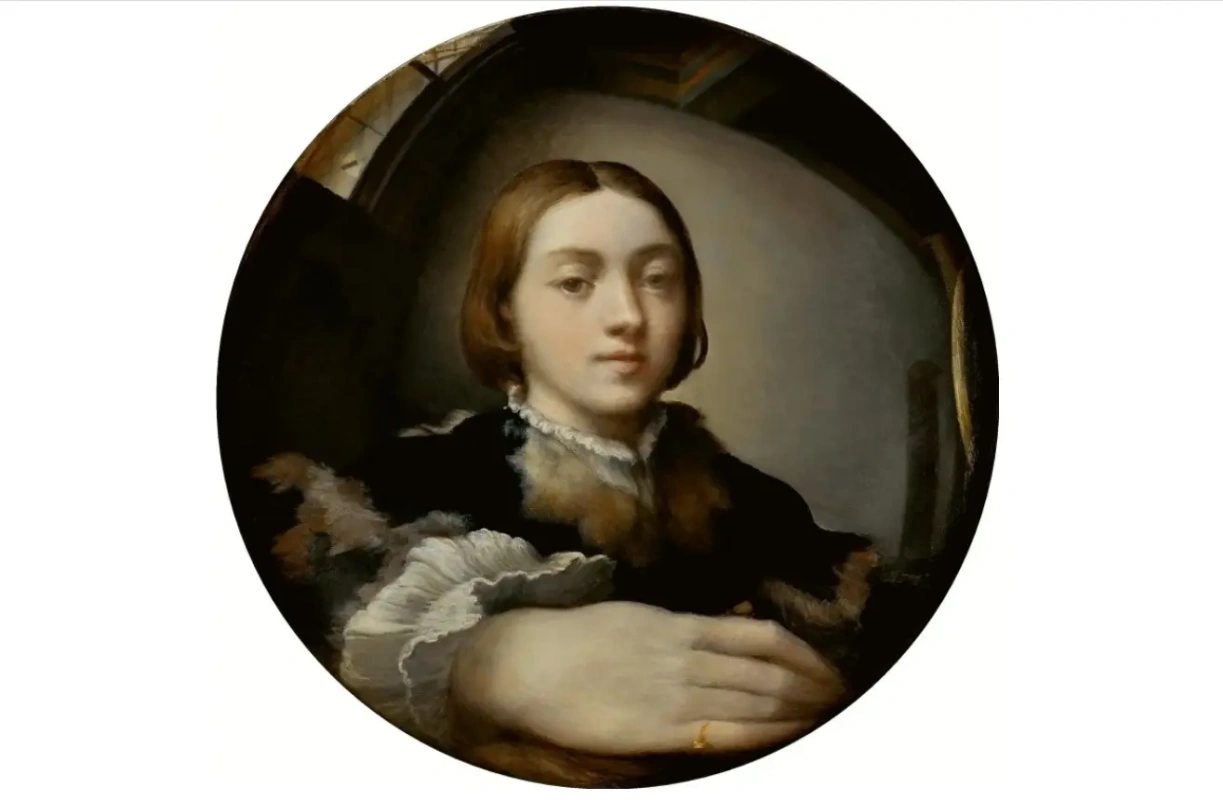
A gifted orphan
The father of the future artist, Filippo Mazzola, was a painter from Parma. But the boy did not know his parents at all: they died one year apart and already at the age of two, Francesco became an orphan. He was lucky that his father’s brothers were able to take care of him — they also were artists and taught him the basics of skill, and timely saw the makings of great talent in the boy. However, other residents of Parma did either, who, when contacting the studio of the Mazzola brothers, preferred to entrust their orders to Francesco.In 1521, when Parmigianino turned 18, his hometown became the place of a stormy battle between the army of Pope Leo X and the aremy of King Francis I of France, so he together with his guardians preferred to wait out the turmoil in Viadan. There he had the opportunity to test his strength in working with tempera for the first time while painting The Mystical Marriage of St. Catherine altarpiece. Vasari recalled that the skill of the young painter amazed his contemporaries so much that none of them could even believe that "it was not an old artist who painted this, but an aspiring young man".
The mystical betrothal of St. Catherine (Bardi Altarpiece)
1521, 203×130 cm
Back in Parma, Parmigianino painted the local Basilica of San Giovanni Evangelista. He became the only painter from his hometown who was invited for this work by the monks of the Order of St. Benedict. He received this honour along with the then recognized artists Michelangelo Anselmi and Antonio Correggio. Correggio’s fresco, The Vision of St. John on Patmos, on the vault of the basilica made such an impression on the young artist that he began to try to imitate his idol and copy his style in his work.
Parmigianino borrowed the languid grace of poses and the rapid dynamism of the composition from Correggio, and brought these features to the maximum. The figures in his paintings become elongated and whimsically wriggling, the poses are smooth and fluid. He continued to experiment, moving further and further from realistic proportions towards an individual style, which art critics would attribute to Mannerism. This specific manner will be traced already in the next large work of Parmigianino, a fresco painting of the private chambers of the spouses Paola Gonzaga and Galeazzo Sanvitale in their Fontanellato castle in 1523.
American art historian Bernard Berenson called him "the last of the truly Renaissance
artists in Northern Italy" and noted: "He had such an irresistible penchant for elegance that Correggio did not satisfy him. But Parmigianino expressed this elegance with such sincerity and fervour that he created his own authentic, albeit limited, style of refined grace and fragile sophistication."
Also read
Mannerism
Self-portrait took to Rome
In 1524, the young artist, accompanied by his uncles, went to Rome. He had big plans, according to Vasari: "While studying in Rome, he wished to see all the ancient and new works of sculpture and painting in this city. But he especially admired the creations of Michelangelo Buonarroti and Raffael da Urbino." However, in addition to this, Parmigianino had ambitions to receive orders from the highest church nobility.To this end, he brought the best examples of his work, among which was the innovative Self-Portrait in a Convex Mirror.
Self-portrait in a convex mirror
1524, 24.4×24.4 cm
To create this picture, he ordered a wooden hemisphere of the same size as the mirror, in which he planned to accurately convey his reflection along with all the distortions and glare. And the result was stunning: as soon as one of those close to the court of Pope Clement VII saw the skilful self-portrait, he immediately ordered to present the young talent to the pontiff. Rumours about the advent of a painter, in whom the spirit of Raphael himself entered, began to spread rapidly throughout the city.
Even centuries later, this self-portrait of Parmigianino did not lose its showiness: Alexandre Benois, usually stingy with praise, called it "one of the most perfect imitations of visibility" and noted that he "could probably compete with the grapes of Zeuxis and the curtain of Parrasius. And even for our eye ‘well-trained' with photography, this contrivance has not lost its power of illusion".
And in the 80s of the last century, the American avant-garde
poet John Ashbury devoted to the "Self-Portrait in a Convex Mirror" a poem of the same name, which contains the following lines:
Francesco, your hand is big enough
To wreck the sphere, and too big,
One would think, to weave delicate meshes
That only argue its further detention. (Big, but not coarse, merely on another scale,
Like a dozing whale on the sea bottom
In relation to the tiny, self-important ship
On the surface.) But your eyes proclaim
That everything is surface.
The surface is what’s there
And nothing can exist except what’s there.
Francesco, your hand is big enough
To wreck the sphere, and too big,
One would think, to weave delicate meshes
That only argue its further detention. (Big, but not coarse, merely on another scale,
Like a dozing whale on the sea bottom
In relation to the tiny, self-important ship
On the surface.) But your eyes proclaim
That everything is surface.
The surface is what’s there
And nothing can exist except what’s there.
During his stay in Rome, Parmigianino studied and copied the works of Raphael and Michelangelo a lot, which found its reflection in his own paintings. The last of them was painted before leaving, The Vision of St. Jerome. It was a rethinking of Michelangelo’s sculptural composition Madonna of Bruges: in Parmigianino’s painting, the Baby Jesus also stands at the feet of St. Mary. And the pose of John the Baptist with a raised finger at the bottom of the panel reminds of the image of this saint in the painting by Leonardo da Vinci.
According to Vasari, it was during the work on The Vision of St. Jerome that the soldiers of Emperor Charles V burst into the house, but the artist did not even notice this due to his immersion in the process of creating the picture.
They were allegedly so impressed with Parmigianino’s skill and equanimity that they left the house without harming him, but at the same time taking several of the artist’s works with them.
According to Vasari, it was during the work on The Vision of St. Jerome that the soldiers of Emperor Charles V burst into the house, but the artist did not even notice this due to his immersion in the process of creating the picture.
They were allegedly so impressed with Parmigianino’s skill and equanimity that they left the house without harming him, but at the same time taking several of the artist’s works with them.
Failed engraver
Upon leaving Rome due to hostilities, the artist moved to Bologna. While in the capital he was one of many other promising talents, here Parmigianino’s skills brought him closer to the first lines of the local rating of painters. Inspired by his success, he decided to open a studio, where, among other things, he made etchings after his sketches.However he failed because of the uncleanliness of his assistant, who decided to vanish along with all the engravings and drawings for them. Although the loss was soon discovered, the artist was never able to return to etchings and fully devoted himself to painting.
The Madonna with the long neck
1530-th
, 219×135 cm
The four years spent in Bologna became a decisive period in the formation of Parmigianino’s style. Among its distinctive features are the hypertrophied transmission of the characters' emotions in religious scenes and the mystical atmosphere enhanced by peculiar poses of the characters and alchemical symbols. For example, in one of the most famous paintings of this period, Madonna of the Rose, the flower can appear both as a symbol of the immaculate conception, and as a designation of the final stage of matter transformation in alchemy.
Madonna with a rose
1530, 88.5×109 cm
Also read
Flower as symbol in art
Here Parmigianino created one of his most impressive canvases, the religious scene The Conversion of Saul. The episode from the Acts of the Apostles book of the New Testament is dedicated to the miraculous transformation of the bloodthirsty Pharisee into a faithful Christian after being caught by a heavenly voice on his way to Damascus, which persuaded him to discontinue his persecution of believers. Parmigianino abandoned the traditional multi-figured scene and the image of Christ on a cloud, making the the Saul’s horse central figure of the composition, which symbolized the transforming power of God.
The Conversion Of Saul
1520-th
, 177.5×128.5 cm
A sad ending
In 1531 the artist returned to Parma. Here he received an order to paint the church of Santa Maria della Steccata and at first got down to business with great enthusiasm: he created many preparatory sketches and even sculpted clay figures for subsequent casting of bronze sculptures. He planned to complete the large-scale project within a year and a half and hired additional staff for this, but the work did not go well. The supply of necessary materials was often interrupted, and representatives of the clergy opposed the embodiment of Parmigianino’s ambitious and innovative ideas.But worst of all, the artist’s passion for alchemy, which did not pose a particular threat at first, began to acquire the scale of obsession. He began to spend all his earnings on expensive equipment for experiments with mercury: Parmigianino spent more on coal, firewood, glass flasks and other consumables in one day than he earned in Steccata in a week. As a result, he finally abandoned work on the painting, broke the deadlines, and the church community went to court to recover damages from the negligent artist who received a solid advance payment for the unfulfilled order.
Lucrezia
1540
Parmigianino managed to get out of custody through his promise to finish the frescoes in the chapel as soon as possible, but instead of resuming work on the order, he fled to the town of Casalmaggiore. Here the artist managed to paint several more paintings, the last of which is considered Lucretia, laconic in all respects. But the artist’s mind grew more and more darkened, and, according to Vasari, he rapidly turned "from a graceful and pleasant man into a bearded one with long and dishevelled hair, sank and became unsociable and gloomy".
Parmigianino’s self-portrait of this period captured this striking change without embellishment: it is hard to believe that the dim and brooding eyes at it belong to the same seductive handsome man from the Self-Portrait in a Convex Mirror.
Parmigianino’s self-portrait of this period captured this striking change without embellishment: it is hard to believe that the dim and brooding eyes at it belong to the same seductive handsome man from the Self-Portrait in a Convex Mirror.
Self-portrait
1540
In 1540, at the age of only 37 years old, Parmigianino died of "severe fever". Vasari lamented the sudden death of the once promising artist and blamed his passion for alchemical experiments: "Oh, if only the Lord wished him to continue to paint, and not get carried away with the dream of freezing mercury, for the sake of acquiring riches greater than what nature and the sky have endowed him with! Indeed, in this case, he would become truly unique and incomparable in painting. Whereas he lost time seeking for something he could never find, he disgraced his art and ruined his life and glory."
In accordance with Parmigianino’s eccentric will, he was buried naked with a cross made of cypress wood on his chest in the Basilica of La Fontana near Casalmaggiore.
In accordance with Parmigianino’s eccentric will, he was buried naked with a cross made of cypress wood on his chest in the Basilica of La Fontana near Casalmaggiore.
Los pintores mencionados en el artículo











